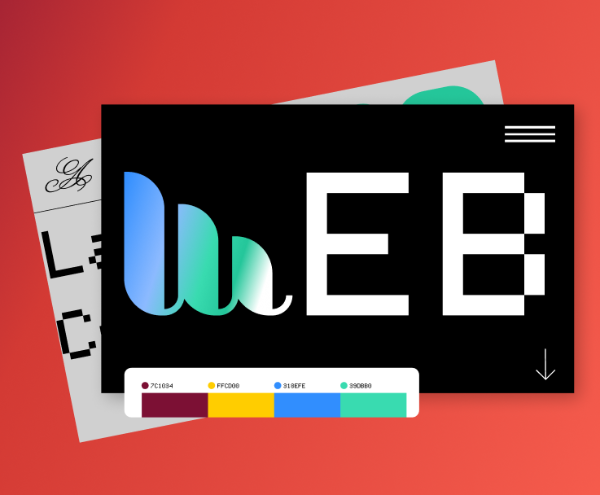Website Development Cost Solutions
Website Development Cost Best Practices
Website Development Cost
Web hosting is a service that allows individuals and organizations to make their websites accessible on the internet. In simple terms, web hosting is like renting space on a computer server to store and host your website files. This service enables users to publish their website contents online, making it available for viewing by people around the world.

Website Development Cost FAQ
Website Development Cost
What is a SEO web builder?
A SEO web builder is a website building tool that is specifically designed to help users create websites that are optimized for search engines. These tools typically come with a range of features that make it easier to implement SEO best practices, such as keyword optimization, meta tags, and site speed optimization.
One of the key benefits of using a SEO web builder is that it can help users implement SEO techniques without requiring any technical expertise. This means that even those who are new to SEO can still create a website that is optimized for search engines.
Features of a SEO web builder
There are several key features that are typically included in a SEO web builder. These features are designed to make it easier for users to optimize their website for search engines. Some of the most common features include:
– Keyword optimization: A SEO web builder will typically include tools that help users identify relevant keywords for their website. These tools will suggest keywords that are popular in a specific niche, making it easier for users to target their content to a specific audience.
– Meta tags: Meta tags are snippets of code that provide information about a webpage to search engines. A SEO web builder will typically include tools that make it easier for users to create and optimize meta tags for their website.
– Site speed optimization: Site speed is an important factor in SEO rankings. A SEO web builder will typically include tools that help users optimize their website’s loading speed, ensuring that it loads quickly and efficiently.
– Mobile optimization: With more users accessing websites on mobile devices, mobile optimization is crucial for SEO. A SEO web builder will typically include tools that help users create a responsive website that looks good on all devices.
Benefits of using a SEO web builder
Using a SEO web builder can offer a range of benefits for website owners looking to improve their SEO rankings. Some of the key benefits include:
– Easy implementation of SEO techniques: One of the main benefits of using a SEO web builder is that it makes it easy to implement SEO techniques, even for beginners. This means that website owners can start optimizing their site for search engines without the need for technical expertise.
– Cost-effective solution: Hiring a professional SEO agency to optimize a website can be costly. Using a SEO web builder is a more cost-effective solution, as it allows website owners to optimize their site themselves without the need for external help.
– Increased visibility: By optimizing a website for search engines, website owners can improve their SEO rankings and increase their visibility online. This can result in more organic traffic and higher conversion rates.
– User-friendly design: A SEO web builder typically comes with a user-friendly interface that makes it easy to create and customize a website. This means that even those with limited technical skills can create a professional-looking site that is optimized for search engines.
Website builders are tools that allow users to create a website without needing to know how to code. They provide pre-designed templates and intuitive drag-and-drop features that make it easy for even the least tech-savvy individuals to create a professional-looking website. With hundreds of website builders available on the market, choosing the best one for your small business can be a daunting task. In this article, we will discuss some of the best website builders for small businesses to help you make an informed decision.
1. Wix
Wix is one of the most popular website builders on the market, and for good reason. It offers a wide range of professionally designed templates that are customizable to suit your business’s branding and style. Wix also has a user-friendly drag-and-drop interface that makes it easy to add text, images, videos, and other elements to your website. In addition, Wix offers a variety of features such as e-commerce functionality, blog integration, and SEO tools to help you optimize your website for search engines.
2. Squarespace
Squarespace is another highly popular website builder known for its sleek and modern templates. It is a great choice for small businesses in creative industries such as design, photography, or fashion, as Squarespace’s templates are visually striking and can be easily customized to showcase your work. Squarespace also offers e-commerce functionality, blogging capabilities, and built-in SEO tools to help you attract more visitors to your website.
3. Weebly
Weebly is a user-friendly website builder that is perfect for small businesses looking to create a professional-looking website quickly and easily. Weebly offers a variety of templates that are fully customizable, along with drag-and-drop functionality that allows you to create a website without any technical expertise. Weebly also provides e-commerce tools, blogging capabilities, and SEO features to help you grow your online presence.
4. Shopify
If your small business is primarily focused on selling products online, Shopify is the website builder for you. Shopify is an e-commerce platform that allows you to create a fully functional online store with ease. It offers a variety of customizable templates specifically designed for e-commerce, along with features such as inventory management, payment processing, and shipping options. Shopify also provides built-in SEO tools to help you attract more customers to your online store.
5. WordPress
WordPress is a powerful content management system that allows you to create a highly customizable website for your small business. While WordPress is more complex than some other website builders, it offers unparalleled flexibility and control over your website’s design and functionality. With thousands of plugins and themes available, you can create a website that perfectly suits your business’s needs. WordPress also provides e-commerce capabilities, blogging features, and SEO tools to help you create a successful online presence.

Website Development Cost
Website Development Cost
In today’s digital age, having a visually appealing and user-friendly website is crucial for the success of any business. A well-designed website can help attract new customers, build credibility, and increase conversion rates. However, designing a website is not as simple as it may seem. It requires a strategic and systematic approach to ensure that the final product meets the needs and expectations of both the business and its target audience. In this article, we will discuss the website design process in detail, outlining the key steps involved in creating a successful website.
Step 1: Define the Purpose and Goals
The first step in the website design process is to clearly define the purpose and goals of the website. This involves identifying the target audience, understanding their needs and preferences, and determining the desired outcomes for the website. For example, is the website meant to generate leads, drive sales, provide information, or showcase products and services? By having a clear understanding of the purpose and goals of the website, you can better tailor the design and content to meet these objectives.
Step 2: Conduct Research
Once the purpose and goals of the website have been defined, the next step is to conduct research. This involves analyzing the competition, researching industry trends, and gathering insights into the preferences and behaviors of the target audience. By conducting thorough research, you can gain a better understanding of what works and what doesn’t in your industry, helping you make informed design decisions.
Step 3: Create a Wireframe
After conducting research, the next step in the website design process is to create a wireframe. A wireframe is a visual representation of the layout and structure of the website, showing the placement of various elements such as navigation menus, headers, footers, and content sections. Creating a wireframe allows you to plan the overall design and functionality of the website before moving on to the visual design phase.
Step 4: Design the Visual Elements
Once the wireframe has been finalized, the next step is to design the visual elements of the website. This involves creating a visually appealing and consistent design that reflects the brand identity and resonates with the target audience. Elements such as color scheme, typography, imagery, and layout are carefully considered to create a cohesive and attractive design that conveys the desired message and engages users.
Step 5: Develop the Website
After the visual design has been approved, the next step is to develop the website. This involves coding the design into a functioning website using HTML, CSS, and other programming languages. During the development phase, the website is tested for functionality, responsiveness, and compatibility across different devices and browsers to ensure a seamless user experience.
Step 6: Test and Optimize
Once the website has been developed, it is essential to test and optimize its performance. This involves conducting usability tests to identify any usability issues, testing load times to ensure fast page speeds, and optimizing the website for search engines to improve visibility and accessibility. By testing and optimizing the website, you can ensure that it meets the needs and expectations of users, leading to better engagement and conversions.
Step 7: Launch and Monitor
The final step in the website design process is to launch the website and monitor its performance. This involves deploying the website to a live server, promoting it to the target audience, and tracking key metrics such as traffic, engagement, and conversions. By monitoring the performance of the website, you can identify areas for improvement and make informed decisions to optimize its effectiveness over time.

